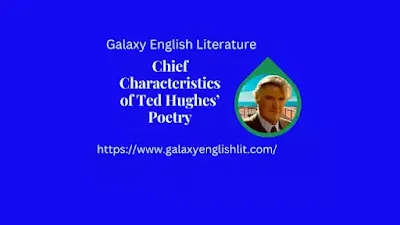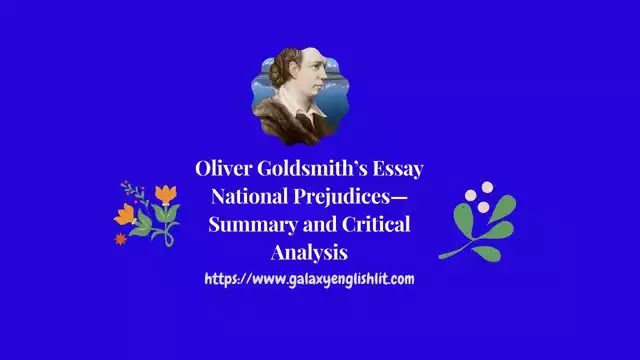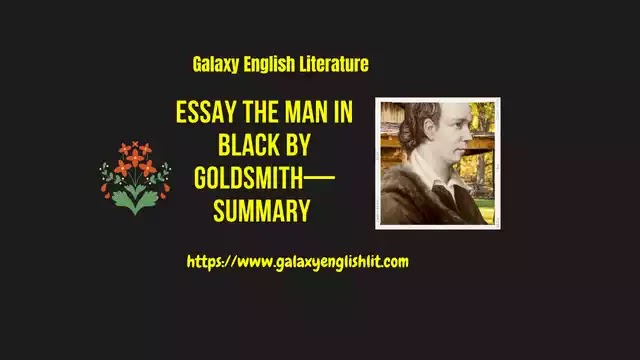Introduction:
Ted Hughes has emerged as a major English poet not only in Britain but in the whole of the English - speaking world. As a prolific poet, he has produced during the last thirty years over a dozen anthologies and sequences of poems. He was much interested in the external nature from the very beginning of life. He had created a distinctive imaginative world. Ted Hughes’ animal poems are like a thunderbolt and indeed many of them seem to spring from the page with the energy of a force of nature. His most recent verse implies a recantation of materialism and its world of death, suffering and woe, a conscious abandonment of ‘fate’, even if, in halting and questioning one's destiny, one may be subject to profound loss. The future development of Hughes’ poetry is hard to predict. His early poems include Pike, Wind and View of a Pig. At the first appearance these poems did not make much impression. Later on they were treated as poems of great success.
 |
| Chief Characteristics of Ted Hughes’ Poetry |
His Major Poetic Works:
Ted Hughes is already a major poet and his career is still rich in promise. Already with elements of Crow and his translation of Seneca's Oedipus, he has made approaches to a synthesis of poetry and drama, and this is an ongoing preoccupation in his work. He has published the following collections of poems: Lupercal (1960), Meet My Folks! (1961), Earth Owl and Other Moon People (1963), Wodwo (1967), Crow (1970), Season Songs (1974), Graduate (1977), and Cave Birds (1978).
A Wide Range and Variety of Themes:
His poetry offers a wide range and variety of themes and styles. His subjects range from animals, landscape, war, the problems poses by the inner world of modern man to the philosophical and metaphysical queries about the status of man in the universe. His moods and methods also reveal a great variety. If he can describe a blank Mooreland as in The Horse in a Wordsworthian manner, he can also speak in a cynical voice of the Crow as in Crow Alight. If he can speak of the feelings of a predatory force as in The Jaguars or in Second Glance at a Jaguar, he can also speak of the horrors that violence in war unleashes as in Bayonet Charge or in Six Young Men or in Out and in Crow's Account of the Battle.
Repletion with Vigour and Vitality:
His poems are not about violence but about vitality. Animals are not violent; they are more completely controlled than men. He recognizes that there is vitality in animals; on the other hand modern rationalism has deprived man of this primeval source of vitality. In his poems, on predatory animals or birds there is more emphasis on their power and energy than on anything else.
His Attitude towards Nature:
Hughes’ poetry continues the tradition of Nature - poetry that dates back to 16th century but unlike Wordsworth who found in Nature, “a nurse a guide and guardian” and unlike Tennyson who found Nature “red in tooth and claw”. Ted Hughes tries to take both the Wordsworthian and Tennysonian approaches to Nature in consideration. In his poems like October Dawn, The Horses and The Wind, Hughes can described Nature in a Wordsworthian manner while in poems like Hawk Roosting, The Pipe and Crow he recognises the power, vitality, violence and predatoriness of Nature without commenting on it.
His Interest in the Animal World:
Ted Hughes has earned a great distinction for himself as a writer of animal poems. There are many poems which are directly related to animals. They deal with the savagery and ferocity of those animals. Poems like The Bull Moses, A Otter, Pike, View of a Pig are some examples of animal poems. They depict violence. But there is also a poem entitled The Horses which depicts the passivity and gentleness of a group of ten horses at a particular moment in their existence. In Wodwo and The Cave Birds, there are poems that do not directly deal with animals but there are symbolic drawings about birds, and so are Crow poems. Many animals represent the dark forces inside the human sub consciousness, the forces that modern civilization tries to crush in the name of rationalism. Hughes’ company with his brother greatly concoursed his interest in animals. Hughes does not have any prejudice against animals who are fierceful and blood - thirsty by nature. He often relates animal cruelty to the life of human beings.
His Interest in Primitivism and Ancient Myth:
Hughes had fascination for primitive beliefs and superstitions. He depends upon many ancient myths for many of his poems. The use of myths and legends is best found in the poems collected in the volume Crow. Hughes has taken the features of Eskimo, Red Indians and Celtic folklore and launched them in our world. One of the myths which inspired Hughes is related to ‘the white goddess’ (or the Nature goddess) in her three aspects of maiden, mother and crone, (or Persephone, Demeter and Hecate). This goddess is both beneficent and destructive. Ted Hughes’ interest in mythology and anthropology led him to study ancient myths of various cultures in detail. His knowledge of myths is not restricted to Christianity and Greek paganism but extends as far as North America, Asia, Africa and Australia. Ted Hughes understands the essence of each myth and adopts it for use in his poetry. He does achieve what he tries through the use of myth in his various poems in Ghost Crabs. Myths provide a symbolism which is expressive of Hughes’ various interpretations of human experiences, the questions about life and death that confront most intelligent men at one period of their life or another.
A Champion of Pacifism:
Despite the changes of violence against him, Ted Hughes emerges as a champion of pacifism in his poems written against the horrors of war. While his contemporary poets like John Holloway and Amiss showed signs of certain benumbment caused by the horrors of wars, Hughes did not close his eyes to the horrible reality and describes war's ravages in a highly realistic manner. In the Bayonet Charges, Grief for Dead Soldiers, Out and Six Young Men, he shows the havoc that war causes.
Violence, an Essential Aspect:
Violence, brutal violence emerges as the major theme in Ted Hughes’ poetry. The animal poems of Hughes like The Jaguar, Second Glance at a Jaguar, Pike, Hawk Roosting, View of a Pig, Esther's Tomcat, Cat and Mouse, Thrushes - are all poems reflecting the cruelty, the fierceness and the violence. In Pike, we find that the pike fish are “killers from the egg” i.e., their killer instinct is basic to their nature. In Hawk Roosting, the bird says to himself: “I kill where I please because it is all mine.” It further says: “My manners are tearing off heads.” In Thrushes, the birds move about with ‘a bounce and a stab’ to catch hold of some insect in the grass. In Esther's Tomcat a tomcat sprang at a knight on his horseback and killed him though he fought hard against its clawing and bite’.
His Style and Language:
Ted Hughes’ style and language both are superb. It took him several years a perfect his style and language so that they could become a suitable vehicle for his thoughts and feelings. He has always tried to match his form, diction and style to the subject matter. He uses simple vocabulary or puts words together in simple combinations in many poems. The volume called Hawk Roosting is an example of this kind of style. The poem entitled Six Young Men is another example of a simple and the easy flow of words in English language. His poems are replete with similes and metaphors. In Ghost Crabs we come across the following simile: “like a packed trench of helmets”. In November, we have the following simile: “Some, stiff, weightless, twirled like dry bark hits.” In The Jaguar, we have the following metaphorical statement: “The boa constrictor's coil is a fossil.” The use of imagery is the striking feature of Hughes’ poetic style. The poem entitled October Dawn contains a series of Nature - pictures which are most vivid and realistic. The poem called The Horses is also remarkable for its vivid realistic Nature imagery. Hughes has special skill in using alliteration. In November, we have the following line: “The hill where we have crouched with clenched teeth.” In The Jaguar, we have oft - quoted phrase: “By the bang of blood in the brain.” Repetition of the words and sentences is found in his poems. In the poem The Horses, the animals have been described in the following manner:
“Grey silent fragments
Of a grey silent world.”
Hughes uses paradox. In The Horses, we have the following paradoxical line: “the frost showed its fires.” In The Jaguar, we have the following line: “The eye satisfied to be blind in fire.” The remarkable quality which is to be found in almost every poem of Hughes is the structural unity of his poems. Almost every poem by him is well - knit, compact, and self-sufficient even if it belongs to a long sequence like the one called Crow or the one called Cave Birds. November and October Dawn are largely Nature - poems, and each of them is characterised by a structural unity. Hughes poetry has the effect of music. His poetry depends not only on diction and rhythm but also on the sound of words. For him, the appeal of the sound of words was even more important than their visual impact.





